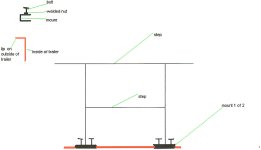trailertrash
Bronze Member
I'm trying to build or rather have built a project out of 1" square tube steel that is pretty thick walled (1/8 " ?) now I'm ready to build the final model and was wondering where I can find info about using a bigger diameter size square tube to increase the welding surface without losing strength or increasing weight much if at all . I'm pretty sure the info is out there I just don't have a clue where. /forums/images/graemlins/confused.gif
Thank you
Thank you


